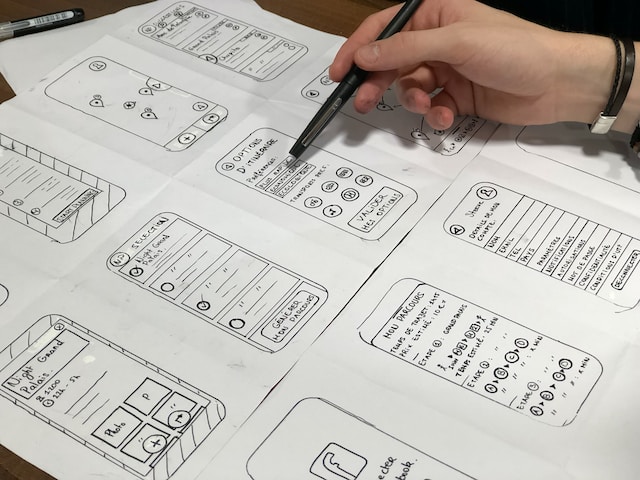Responsive Web Design: Creating Websites for the Mobile Era
Introduction
Mobile devices have become vital for daily tasks in today's technological age. As a result, websites must adapt to the ever-changing sizes and resolutions of screens. This is where responsive web design becomes essential and you may need help from a digital design agency. By employing responsive web design, websites can effortlessly adjust and offer the best user experience on devices like smartphones, tablets, and desktops. This article will explore the essential elements and principles of responsive web design and demonstrate how it enables the creation of websites customized for the mobile era.
Understanding Responsive Web Design
Fluid Grids and Flexible Layouts
Using fluid grids and flexible layouts is essential to responsive web design. Unlike rigid structures, fluid grids can adjust to various screen sizes and enable effortless reorganization of content. Designers can utilize CSS techniques such as percentages and relative units to create layouts that smoothly adapt to the available screen space. This ensures a uniform and aesthetically pleasing experience across different devices.
Media Queries and Breakpoints
Media queries are vital in creating responsive web design as they enable designers to implement various styles and layout guidelines depending on the size and resolution of the screen. By establishing breakpoints, designers can determine specific points at which the website's layout and content will adjust to ensure a superior user experience. This approach allows for a more focused and efficient design strategy that accommodates different devices and their distinct qualities.
Fundamental principles of responsive web design that are essential to consider include:
- Fluid grids: Creating flexible grids that can adapt and adjust based on the screen size of the device used to view the website.
- Flexible images: Using images that can scale and resize accordingly to fit different screen sizes without sacrificing clarity or quality.
- Media queries: Utilizing CSS media queries to determine the device's screen size and adjust the website's layout and design accordingly.
- Mobile-first approach: Prioritizing the design and functionality of the website for mobile devices, considering the limited screen space and touch interactions.
- User-centric design: Focusing on the needs and preferences of the users, ensuring that the website is intuitive, easy to navigate, and provides an optimal user experience across all devices.
- Performance optimization: Striving for fast loading speeds and efficient performance, considering factors such as minimizing code, image compression, and optimizing server responses.
- Accessibility: Ensuring that the website is accessible and usable for all users, including those with disabilities or special needs, by adhering to accessibility guidelines and best practices.
- Compatibility: Testing and ensuring the website is compatible with different browsers, operating systems, and devices to provide a consistent user experience.
- Content prioritization: Designing the website to prioritize essential content and functionalities, ensuring a seamless experience regardless of the device being used.
- Continuous testing and improvement: Regularly testing the website's responsiveness and improving based on user feedback, analytics, and emerging technologies.
Mobile-First Approach
In creating websites that work well for mobile devices, it is essential to prioritize mobile design before expanding to more giant screens. As mobile devices become more popular for web browsing, delivering a smooth experience for mobile users is crucial. By beginning with a design that works on smaller screens, designers from Designrush can ensure that the key features and content fit well and then gradually improve the design as the screen size increases.
Scalable and Responsive Images
Images are critical in web design, and it is essential to ensure they can respond appropriately to provide users with a smooth experience. Responsive images can adjust and resize according to the size of the screen they are being viewed on, which not only enhances performance but also optimizes bandwidth usage. By employing methods such as srcset and size attributes, web designers can offer different versions of images depending on the device's capabilities, the screen's resolution, and the network's conditions. This process ensures that users can receive the most optimized images for their specific devices, resulting in quicker loading times and a better overall user experience.
Flexible Typography
Web design requires typography that is both essential and responsive. To achieve flexibility, designers employ relative units such as percentages and ems to determine font sizes, allowing them to adjust and scale according to the screen size. Appropriate typography enhances readability and legibility on various devices, including mobile screens and desktop displays. Additionally, considerations for line lengths, spacing, and hierarchy are essential in creating an aesthetically appealing and user-friendly typographic experience regardless of the device being used.
Implementing Responsive Web Design
Responsive Frameworks and Libraries
Designers can use responsive frameworks and libraries to simplify the development process and guarantee uniform responsiveness. These pre-made sets of HTML, CSS, and JavaScript components supply a base for responsive websites. Well-known frameworks such as Bootstrap and Foundation provide responsive grids, navigation menus, and UI elements that can be adjusted to meet the specific needs of a project. By using these frameworks, designers can save time and concentrate on crafting exclusive and captivating user experiences.
Mobile Optimization and Performance
In the era of mobile technology, it is crucial to prioritize the optimization of websites for mobile devices. This process includes techniques like minification, lazy loading, and image optimization to improve performance. These measures involve reducing file size, delaying non-essential resource loading, and optimizing images for quicker delivery. By implementing these practices, websites can deliver a more seamless browsing experience on mobile devices. Moreover, designers must consider network conditions, caching, and minimizing resources that hinder rendering to guarantee speedy and efficient loading times.
Testing and Debugging
It is necessary to test their responsiveness to ensure that websites work correctly on different devices and screens. Designers should conduct comprehensive testing on browsers and devices to fix any problems with layout or functionality. Browser developer tools can help troubleshoot and refine responsive design elements. Moreover, dedicated testing tools and services enable designers to preview and test their websites on various devices and screen resolutions.
Future Trends in Responsive Web Design
It is crucial to constantly stay updated with emerging technologies and best practices in the ever-changing field of responsive web design. Paying attention to the following trends is essential:
Progressive Web Apps (PWAs) seamlessly blend the desirable aspects of websites and mobile applications, creating an immersive user experience. They enable offline usage, push notifications, and the option to install app-like experiences from the internet directly.
AMP is a framework that allows the creation of quick and lightweight web pages tailored for mobile devices. It prioritizes fast loading times to provide near-instantaneous performance.
The significance of designing voice user interfaces (VUI) and conversational experiences has grown due to the popularity of voice assistants and bright devices. This development emphasizes the creation of user interfaces that enable smooth and natural interactions through spoken language.
Conclusion
Creating websites for the mobile era requires responsive web design, which is paramount. By comprehending the principles and fundamental components of responsive design, designers can guarantee that websites offer the best possible user experience on different devices. It is essential to prioritize mobile devices, optimize images and typography, and utilize responsive frameworks and libraries to create responsive websites. By embracing these principles and staying up to date with emerging trends, designers can stay ahead in the constantly evolving field of web design and deliver outstanding user experiences in the mobile era.
Copyright © . All Rights Reserved

